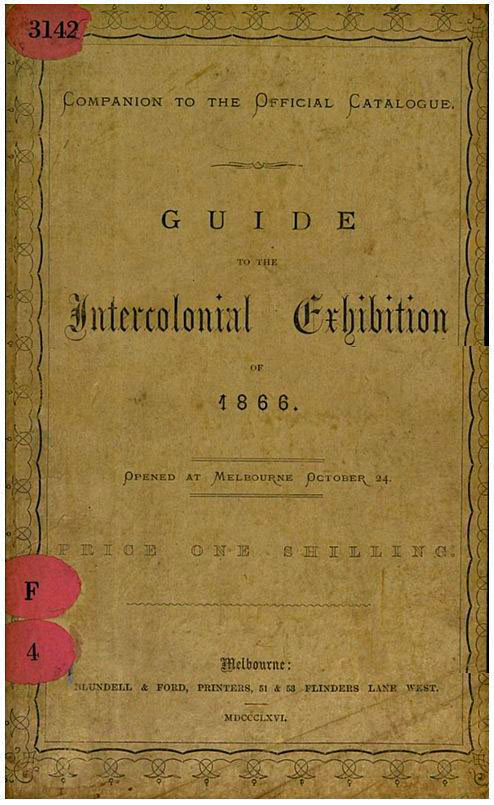The Ferguson & Urie stained glass company displayed examples of their workmanship at many exhibitions over a forty year period from 1853.
The 1866 exhibition stands out as the most unique in the company history as being the one that gave them their greatest exposure on the eastern side of Australia and even into New Zealand.
An entire “Medieval Court” was constructed at the 1866 exhibition which included a detailed reconstruction of a church chancel decorated by Ferguson & Urie which was complete with stained glass windows. The idea for the medieval court was based on Augustus Welby Pugin’s Medieval Court, which was first shown at London’s International Exhibition of 1851 and then at the Crystal Palace, Sydenham, between 1852 and 1866. This medieval court reconstruction at the 1866 Melbourne exhibition was the first of its kind seen in the Australian colony and drew and extraordinary crowd.
The most remarkable of the historical artifacts in the medieval court were Ferguson & Urie’s set of five single light stained glass windows depicting the Nativity, Passion, Crucifixion, Resurrection and Ascension. After the exhibition these windows were installed in the chancel of Christ Church at Casterton in Western Victoria and are still in place to this day, although there is a small mysterious anomaly as the the order the windows were installed!
“GUIDE TO THE INTERCOLONIAL EXHIBITION OF 1866”.
“THE MAIN HALL”.
“ON entering this hall from Latrobe-street, visitors who put themselves under our guidance will find, by turning immediately to the left before arriving at the fur trophy, which faces them, that they have come upon perhaps the last thing one might expect to encounter in an exhibition of the products and manufactures of a new colony – to wit, a Mediaeval Court, the whole of the decorations and contents of which are the work of two Melbourne houses, the one that of Mr. John Young, contractor, and the other that of Messrs. Ferguson, Urie and Lyon, glass-stainers, &c. The excellence of this court consists not more in the beauty of the various articles it contains than in the admirable tone of all the decorations, giving to the place that “dim, religious light” befitting the character it assumes. The stained-glass windows let into the partitions surrounding the court are mainly instrumental in producing this effect. The court is filled with statuary, fonts, and elaborately-ornamented wrought-iron articles, suitable for mediaeval church purposes. One of the statues represents the Madonna and Child; others personify St. John, St. Thomas, and St. Theresa. Attached to the walls near the roof are several of the quaintly-carved figures which catch the eye in old churches. These are intended for St. Patrick’s Cathedral, now in course of erection on the Eastern Hill. To complete the ingenious effect of this court as a complete work of art, Messrs. Ferguson, Urie and Lyon have constructed at the side opposite the entrance a recess representing an early English chancel, the decorations of which are most complete. The furniture of the chancel consists of an altar table, an illuminated oil painting of the last Supper, and illuminated tablets of the commandments, creed, and Lord’s Prayer. The light admitted to the chancel pours through five stained-glass windows, representing respectively the nativity, Passion, Crucifixion, Resurrection, and Ascension. These are designed for the Episcopalian Church at Casterton. The walls are also artistically decorated, and altogether this chancel, with the court leading to it, make up one of the most remarkable objects of the Exhibition”.

Related posts: 10-06-1867 > 25-10-1865 > 03-11-1866 > 20-12-1866
Shortlink to this page: https://wp.me/p28nLD-1os